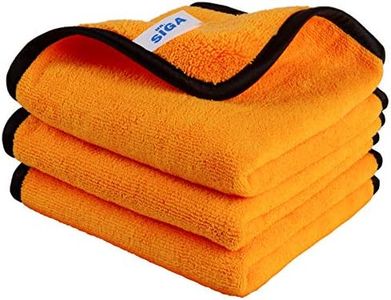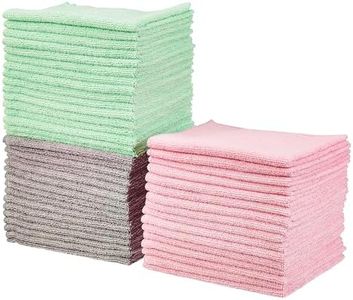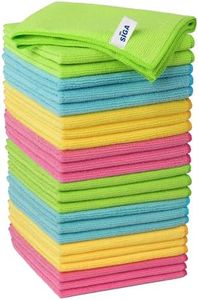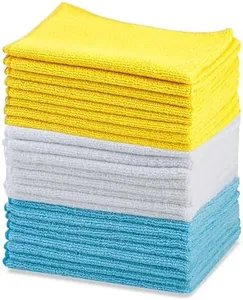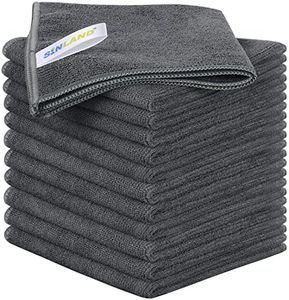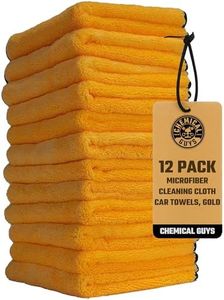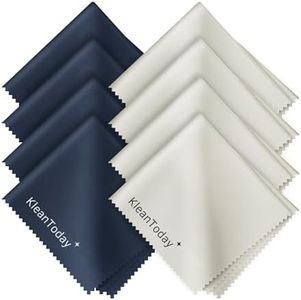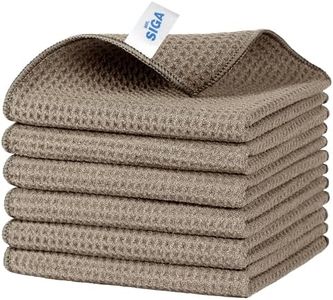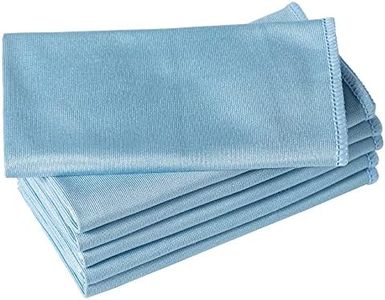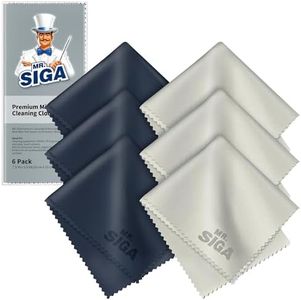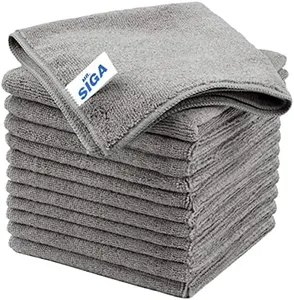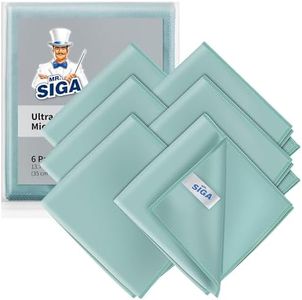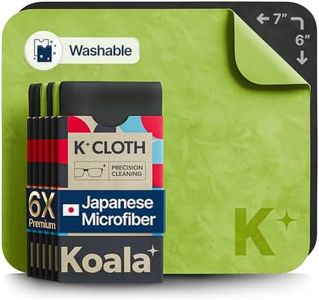We Use CookiesWe use cookies to enhance the security, performance,
functionality and for analytical and promotional activities. By continuing to browse this site you
are agreeing to our privacy policy
10 Best Microfiber Cleaning Cloths
From leading brands and best sellers available on the web.Buying Guide for the Best Microfiber Cleaning Cloths
Microfiber cleaning cloths are versatile, reusable tools used for cleaning surfaces ranging from electronics to kitchen counters and cars. The right microfiber cloth can make cleaning easier, more effective, and reduce the need for chemicals. Buying the right one means understanding what makes a microfiber cloth different from regular cloths, and then matching that to your specific cleaning needs.Fiber Density (GSM)GSM stands for grams per square meter and measures the density of the microfiber cloth. Higher GSM means a thicker, more absorbent cloth capable of trapping more dirt and liquid, while lower GSM results in a lighter, smoother cloth. For delicate surfaces like eyeglasses or screens, a lower GSM (around 200-300) works well. For heavier cleaning tasks, such as car detailing or scrubbing kitchen surfaces, a medium to high GSM (about 300-400 for medium tasks or 400-600 for heavy use) is better. Decide on GSM based on whether you need a soft finish or extra cleaning and absorbing power.
Blend Ratio (Polyester/Polyamide)Microfiber cloths are typically made from a blend of polyester and polyamide (nylon), and the ratio affects absorbency and softness. Common blends are 80/20 or 70/30, with higher polyamide (like 70/30) offering more absorbency and better softness, ideal for delicate or streak-free cleaning. More polyester (like 80/20) makes the cloth slightly cheaper and more durable for tough jobs. If you’re cleaning sensitive surfaces, look for a higher polyamide ratio. For general, all-purpose cleaning, the standard blend will suffice.
Weave TypeThe weave refers to how tightly the fibers are packed and their pattern. Smooth weaves are gentle and best for polishing or cleaning glass, leaving no lint behind. Plush or terry weaves with deeper piles pick up more dust and are suited for bigger messes or drying surfaces. If you mainly want to shine glass or electronics, choose a flat weave. For dusting or drying, select a plush or split-fiber weave. The right weave depends on the cleaning task: go smooth for polishing, plush for absorbency.
Size of the ClothMicrofiber cloths come in various sizes, typically ranging from small squares to larger towels. Smaller sizes (around 12x12 inches) are handy for glasses, screens, or small surfaces. Medium to large sizes (16x16 inches and above) make cleaning tables, cars, or floors much easier. To pick the right size, consider what you'll clean most often: use small cloths for detail work and large ones for broad surfaces.
Edge FinishThe cloth’s edges can be sewn, microfiber-sealed, or laser-cut. Sewn edges can be more durable but sometimes leave scratches on delicate surfaces if the seams are thick or stiff. Laser-cut or edgeless cloths are the safest for delicate surfaces as they avoid this risk. If you plan to use your cloth on sensitive items (such as eyeglasses or car paint), look for edgeless or soft-bound options. For general home use, stitched edges are usually fine.
Lint and Scratch ResistanceMicrofiber’s ability to resist lint and scratching is critical, especially on delicate or shiny surfaces. Lint-free cloths won’t leave tiny fibers behind, and those specifically rated as scratch-resistant provide peace of mind on glass, paint, or electronics. Decide how sensitive the surfaces you’re cleaning are; if you’re doing everyday cleaning, basic microfiber works, but for fine finishes, seek out guaranteed lint-free and scratch-free options.
